The Mutiny on the Bounty (1789)
A story of drama, lust, and betrayal which I thought I uncovered but is in fact the subject of 5 feature films.
Ever since the release of Wordle, I have become a victim of countless online trivia games. Recently, I played the game “Worldle,” which tests your ability to identify a country solely based on its outline. Yesterday’s clue was the following:
I guessed this was Saint Vincent and the Grenadines, Trinidad and Tobago, and Antigua and Barbuda, but obviously these are the Pitcairn Islands - tiny dots in the South Pacific formed by volcanoes and the sole remaining British territory in the region. Upon further investigation, what caught my eye was the 2025 population of only 35. Even crazier is that almost everyone on the island is a direct descendant of the mutineers of a 1787 British merchant vessel named Bounty. What? How? Why? Still? Let’s figure this out.
The Journey
Bounty set off from England on the cold winter night of December 23, 1787. The boat was a British Naval cutter - the smallest and quickest boat in the Royal Armada. The vessel had 4 short cannons, 10 half-pound swivel guns (the most cliche looking of all cannons), and hundreds of muskets manned by the 44 seamen aboard. The ship pulled away from the safe shores of Spithead, England on a mission to procure breadfruit - a starchy South Pacific fruit more like a potato than a peach. To make up for the economic impact of the recent American Revolution, King George III believed breadfruit could become a profitable cash crop in his remaining American colonies in the West Indies. The mission was relatively simple: sail to the remote island of Tahiti and bring back as many breadfruit as could fit in the semi-climate-controlled underbelly of the ship.
The vessel was under the command of Lieutenant (pronounced lef-tennant because they’re British) William Bligh. By being a seasoned Naval officer who had accompanied the famed Captain Cook on previous expeditions, Bligh began the journey well-respected and trusted by his 43 subordinates. He charted a course around the infamously treacherous Cape Horn at the southern tip of South America. More than 10,000 sailors have perished in the waters around Cape Horn with the earliest recorded death in 1616 and the most recent in 2023. While attempting to round the Cape in the spring of 1788, Bounty encountered massive storms and waves that threatened to destroy the vessel. The majority of the crew feared for their lives but Bligh persisted and continued his attempt for weeks before finally giving in to the power of the ocean. As noted in his journal, on April 17 the Lieutenant finally made the order to reroute to Tahiti via the Cape of Good Hope in Africa “to the great joy of every person on Board.”
At this point in the journey, Bligh promoted the 23-year-old Fletcher Christian from Master’s Mate to Acting Lieutenant, among his closest advisors. The well-off families of Bligh and Christian were close back in England and Christian’s insight during the storms at the Cape had earned him further trust. Christian’s haughtiness, charisma, and idealism had made him an effective naval officer so far in his young career, but those same traits would ultimately drive a wedge between him and Bligh.
In October, Bounty was welcomed onto Tahiti by King Pōmare I who had met Bligh on a previous mission with Captain Cook. Bligh ensured Pōmare’s trust and assistance with a basket of gifts and a lie that the mission for breadfruits was also under the authority of Cook who had in fact been dead for 9 years. The crew established a compound among the native Tahitians to cultivate the breadfruit plants. For the following months the Bounty crew, many of whom came from miserable impoverished lives in England and all of whom had spent the better part of a year eating navy rations and braving fifty-foot waves, enjoyed festivities, feasts, and light work.
Endlessly touch deprived, the crew led promiscuous lives with more than 18 of them (including Christian) contracting venereal infections. Christian fell in love with a Tahitian woman by the name of Mauatua whom he called Isabella after an ex from England. Bligh, who remained abstinent and grew tired of his crew’s behavior, called his officers “neglectful and worthless.” As the months went on, Bligh began to punish and even publicly flog his crew for their disobedience until finally on April 5, 1789, after 6 months on the island, Bounty took off for England loaded with breadfruit.
The Mutiny
Throughout April, Bligh’s relationships with Christian and the crew deteriorated. The crew was devastated to have left the easy island life and their Tahitian loves behind, but Bligh did not have a sympathetic bone in his body. He began to punish for less and with more frequency. In his journal, Boatswain's Mate James Morrison described the lieutenant’s behavior as “paranoid.” Bligh accused his crew and Christian specifically of stealing coconuts from his private supply and punished them by ending their rum rations (devastating) and cutting their food rations in half. Floggings and public embarrassments became a regular occurrence on the Bounty deck. Combined with his anguish over leaving Mauatua, the increasingly antagonistic behavior of Bligh drove Fletcher Christian to a state of “depressed and brooding despair.”
From secret conversations with other crewmen, Christian knew he had the support and on April 28, he decided he had had enough. In the early hours of the morning, Christian and his allies seized the armory, distributed muskets, and tied up Lieutenant Bligh. The mutineers brought Bligh up to the deck and rounded up any of those remaining loyal. Much of the crew cheered as Christian proclaimed the following which would become iconic in Hollywood portrayals of this moment: "I have been in hell for weeks past. Captain Bligh has brought this on himself."
Bligh Adrift
Christian set his commander and long-time friend adrift in the South Pacific 1 year and 4 months after leaving England. 19 crew members unwilling to rebel joined Bligh in a small life raft. The extra weight made the boat float only 7 inches above the waterline. As Christian sailed away with the 25 other mutineers, Bligh immediately made for an island marked by rising smoke in the distance: Tofua. Although he had visited the island with Captain Cook, he did not have nearly as good of a relationship with its king, and after 4 days, the Tofuans attacked the mutiny survivors and drove them off the island brutally murdering Quartermaster John Norton with a large rock in the process.
Over the following month, Bligh commanded his tiny vessel over 3,500 nautical miles from Tofua to the Dutch settlement of Kupang in Timor. The men survived on only an ounce of bread and a quarter pint of water each day. While desperately in need of supplies, the raft didn’t dare stop at the Fijian Islands since accurate reports of widespread cannibalism were well known to every sailor. Although a few men died on the journey, the ship reached Timor on June 14, 1789, with their makeshift Union Jack hoisted high. By the fall of that year, Bligh had made it home to England.
Fletcher Christian and the Mutineers
Once the overthrown Lieutenant Bligh disappeared over the Horizon, Christian faced his future. Although he doubted that Bligh could make it home alive, Christian knew it was a possibility and in any case, he understood that he would never be able to return to England. After tossing the now irrelevant breadfruit plants overboard, he and the other mutineers reversed course and sailed to Tubuai - a beautiful island encircled by teal reefs only 450 nautical miles from Tahiti. After attacking and subduing the native population of the island, Christian returned to Tahiti on June 6 to acquire labor and women for his new colony. Of course, he reunited with Mauatua. Christian convinced over 30 Tahitians to travel with him to Tubuai promising a new colony under the command of Captain Cook (still super dead). The colony was a failure and by September, only 8 mutineers remained loyal while the rest returned to Tahiti to take their chances. Multiple of those mutineers who stayed on Tahiti would be captured in the following year and brought to justice in England.
Christian knew that the Royal Navy would search to the ends of the Earth to find and hang him for his treason and so he decided to settle just there: the end of the Earth. Pitcairn Island had been reported in 1767, but since then, no sailor had been able to verify its location. After searching for 3 straight months, in January 1790, Christian rediscovered the island 150 nautical miles away from its mapped location. The original report had made a longitudinal error making Pitcairn Island effectively invisible to all sailors and therefore the perfect home for fugitives. Christian, the Mutineers, and remaining loyal Tahitians landed at Pitcairn and burnt the Bounty, sealing their fate.
1790 - Present
After his return home, Bligh expected a hero’s welcome but was instead court-martialed for his failures during the Bounty expedition. The court scrutinized his behavior but by 1791, he was honorably acquitted of all charges and all blame was laid on Christian.
On Pitcairn, Christian initially formed a successful society. The mutineers and Tahitians brought to Pitcairn lived harmoniously and Christian and Mauatua had a son named Thursday October Christian (he was born on a Thursday in October and his dad wanted his name to be completely un-British). However, in just a few years tensions grew and fighting between Tahitians and mutineers resulted in Fletcher Christian’s death. A mutineer by the name of John Adams took the helm and through peaceful resolution created an enduring society. In 1814, two British ships happened to land at Pitcairn Island, where they were shocked to be greeted in perfect English by Thursday October and John Adams from whom they reported “islanders' welfare was wholly dependent.” Adams died in 1829 after leading the colony for almost 40 years.
Today, the Islands are a British Overseas Territory with a population of 35. Almost everyone is a direct descendant of the Bounty Mutineers.
The Mutiny In Media
When I first read about this story, I thought, “Wow this is super cool, more people should know about this.” It turns out, many other people have had that same thought. The mutiny has been the subject of books, poems, and 5 feature films including the 1935 Academy Award for Best Picture Mutiny on the Bounty, and The Bounty (1984) featuring some little-known actors like Mel Gibson, Anthony Hopkins, Liam Neeson, Laurence Olivier, and Daniel Day Lewis.
Further Thoughts
I find it challenging to distinguish right and wrong in the legendary feud of William Bligh and Fletcher Christian.
Let’s say that Bligh was right: he was a noble Naval Officer who executed his mission given to him by the King honorably. He was strict when necessary but was kind enough to let his crew enjoy months in tropical paradise. Fletcher Christian was just a spoiled kid blinded by young love and a thirst for opportunistic power.
Now let’s take Christian’s side: he was a respected sailor who was abused by a tyrannical lieutenant. He spent months trying to compromise but was eventually encouraged by multiple crewmates to take back control. Bligh was a cruel and jealous leader who punished indiscriminately and was not capable of leading the Bounty mission.
The Royal Navy court decided the first story was true, but from where I sit, 236 years later, it isn’t so clear.
Citations
Alexander, Caroline (2003). The Bounty. London: Harper Collins. ISBN 978-0-00-257221-7.
Bligh, William. "Log of the Proceedings of His Majestys Ship Bounty Lieut[enant] W[illia]m Bligh Commander from Otaheite towards Jamaica (Safe 1/47)" (5 April 1789-13 March 1790) [Textual record]. Bligh Family Collection, Series: 01 William Bligh, papers (Safe 1/22b), Box: 01 William Bligh, papers relating to HMS Bounty (Safe 1/33), File: 1 Log books (Safe 1/46), ID: 853449. Sydney: Dixson Library, State Library of New South Wales.
Hough, Richard (1972). Captain Bligh and Mr Christian: The Men and the Mutiny [republished in 1984 by Corgi as The Bounty]. London: Hutchinsons. ISBN 978-0-09-112860-9.
Linder, Douglas. The Mutiny on the Bounty: A Chronology. Accessed July 8, 2025. https://famous-trials.com/bounty/393-chronology.
Mitchell, John. “The Beginning - A Brief History of Flesh Eating in Old Fiji.” The Fiji Times, October 3, 2021. https://www.fijitimes.com.fj/the-beginning-a-brief-history-of-flesh-eating-in-old-fiji/.
Morrison, James (1935). Rutter, Owen (ed.). The Journal of James Morrison, etc. London: Golden Cockerel Press. OCLC 752837769.





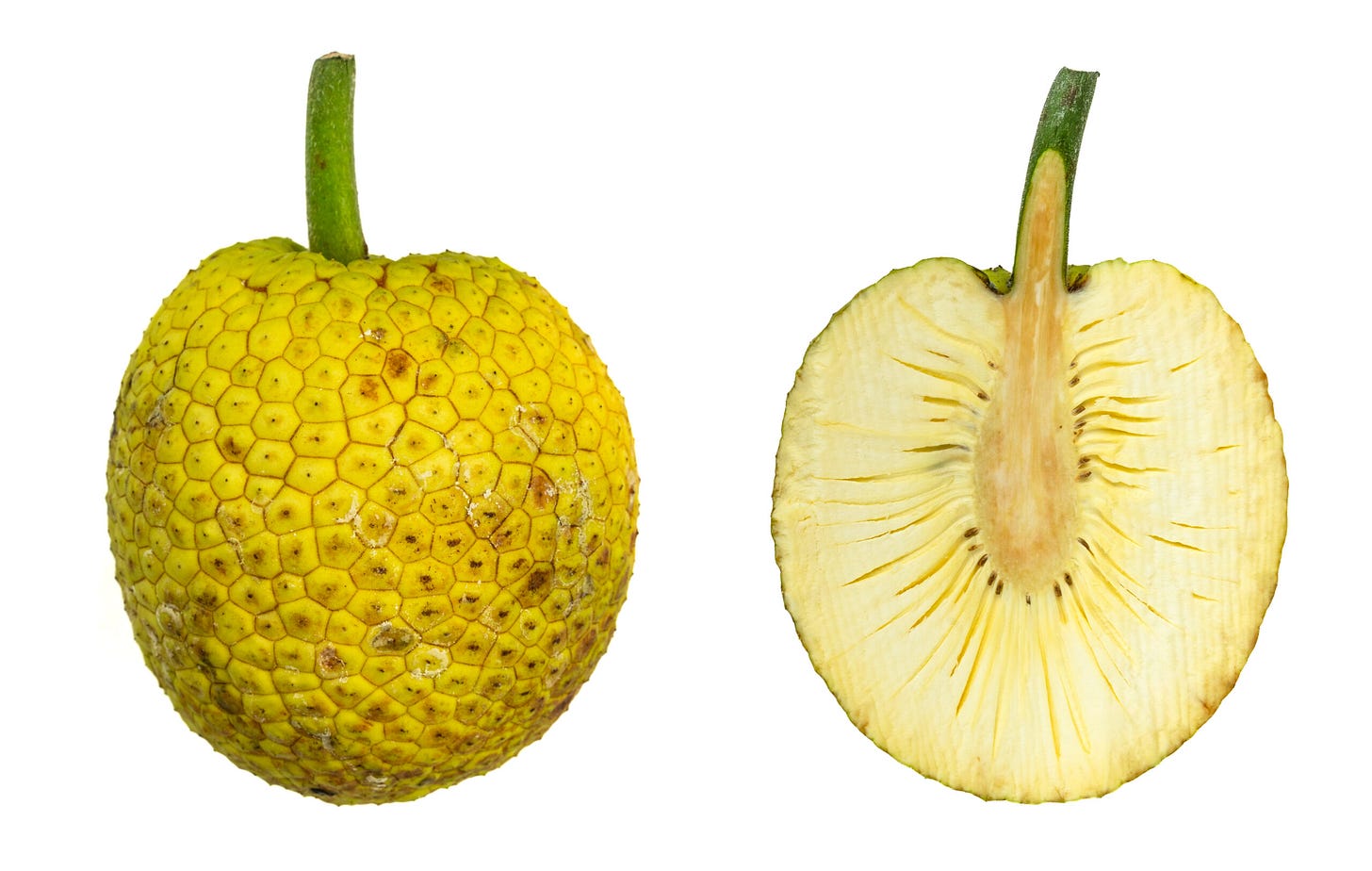
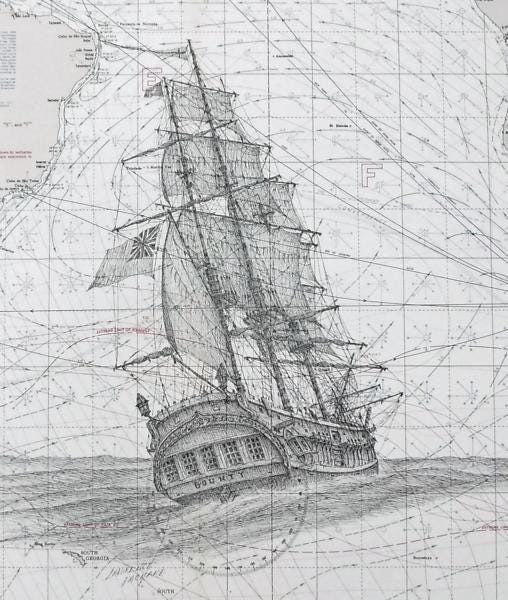
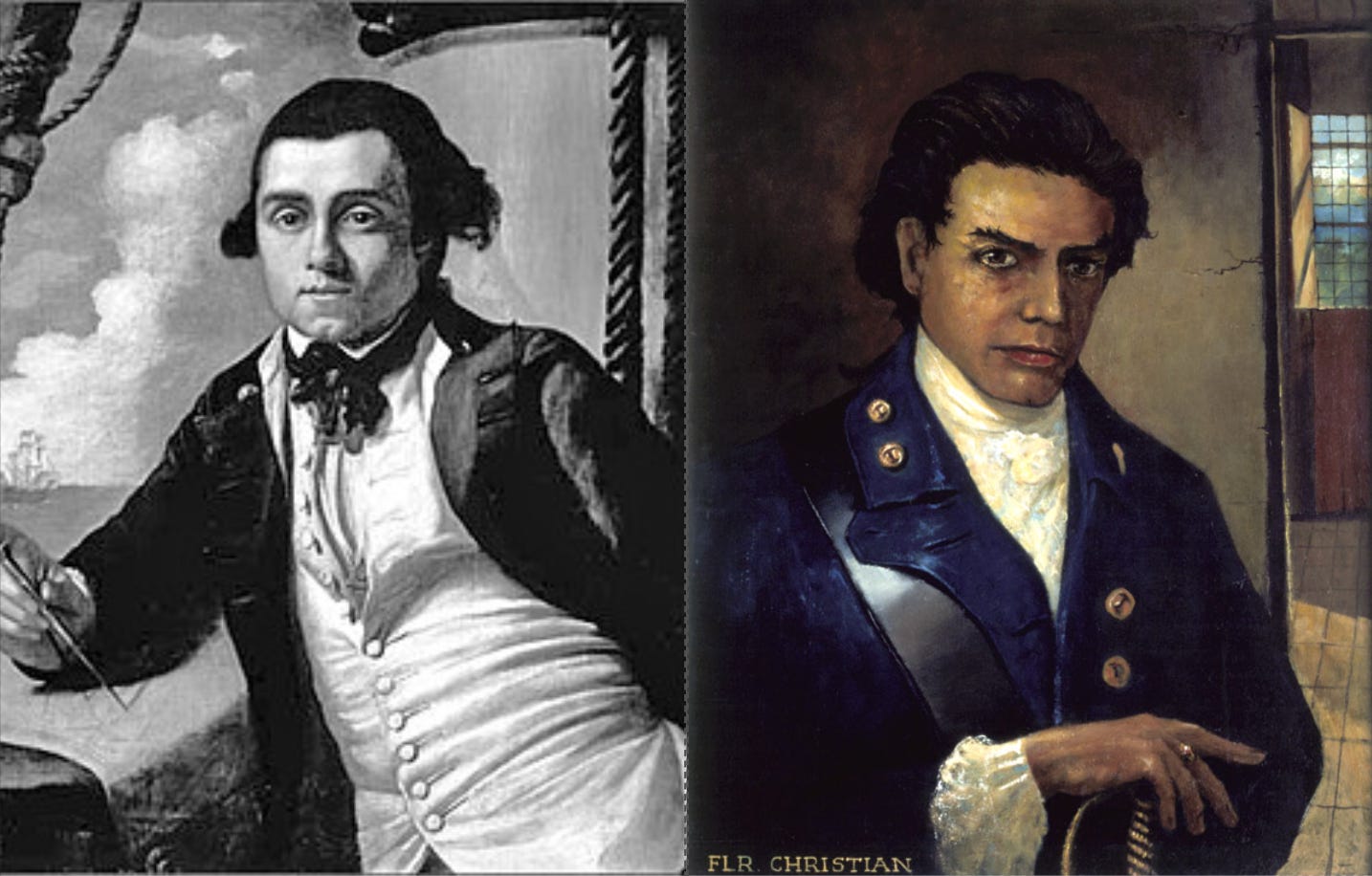
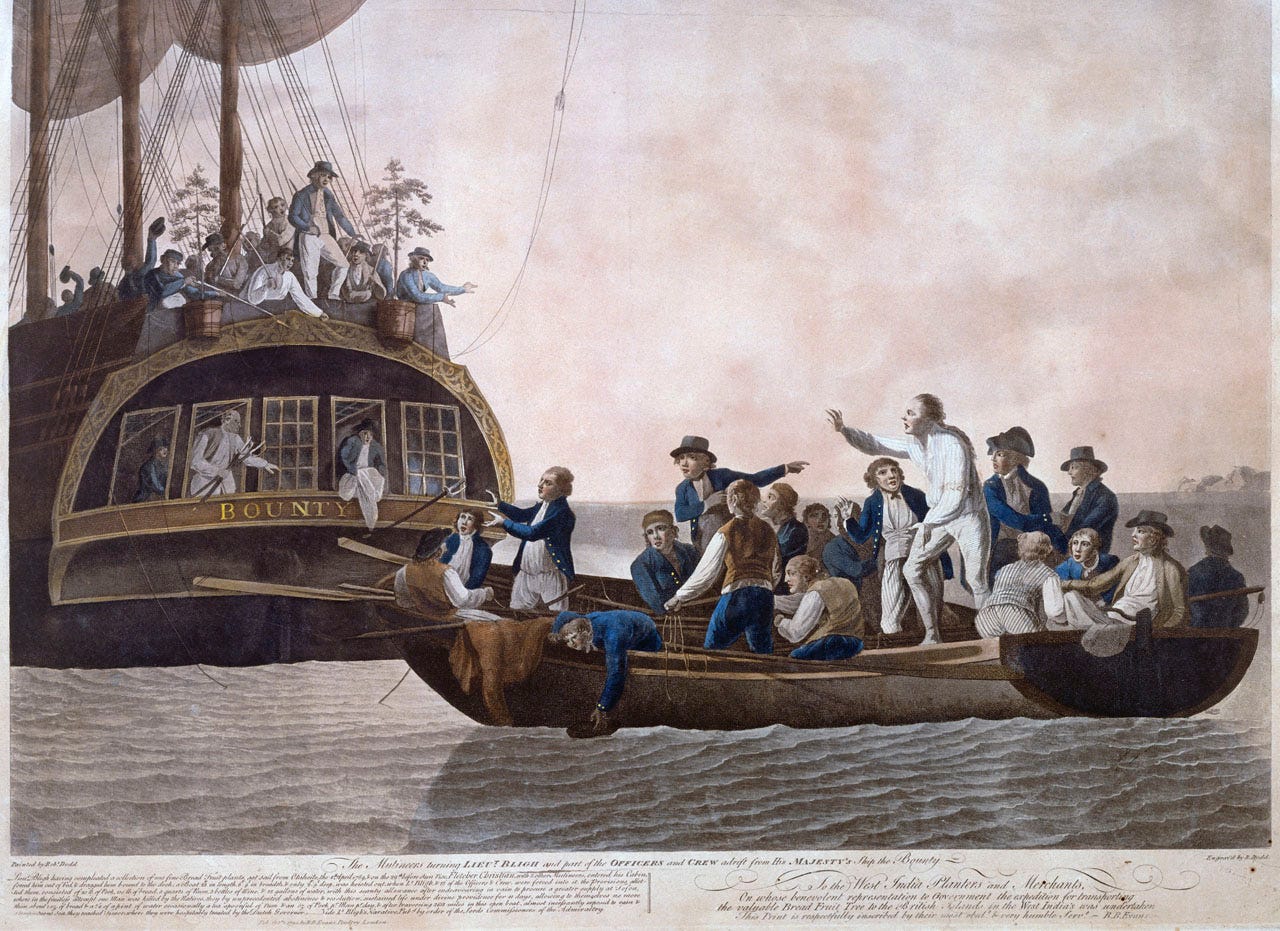
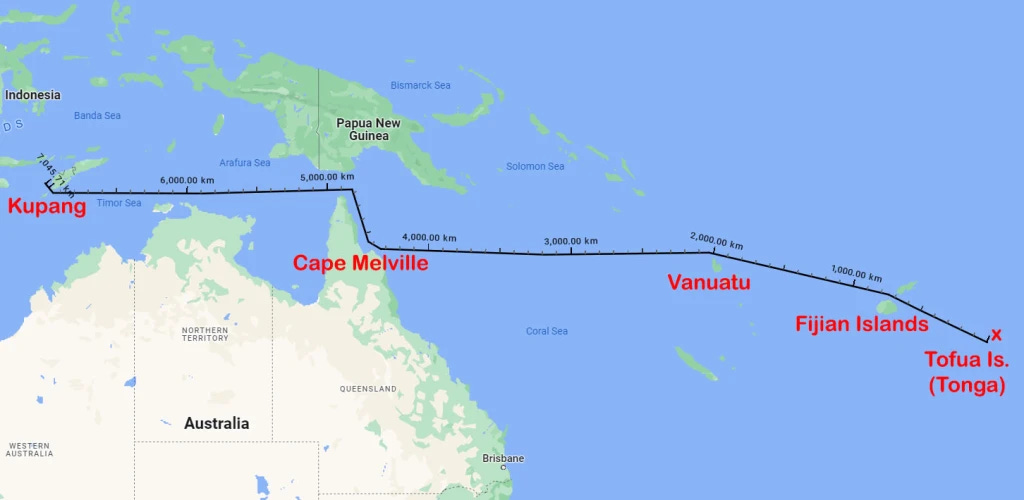

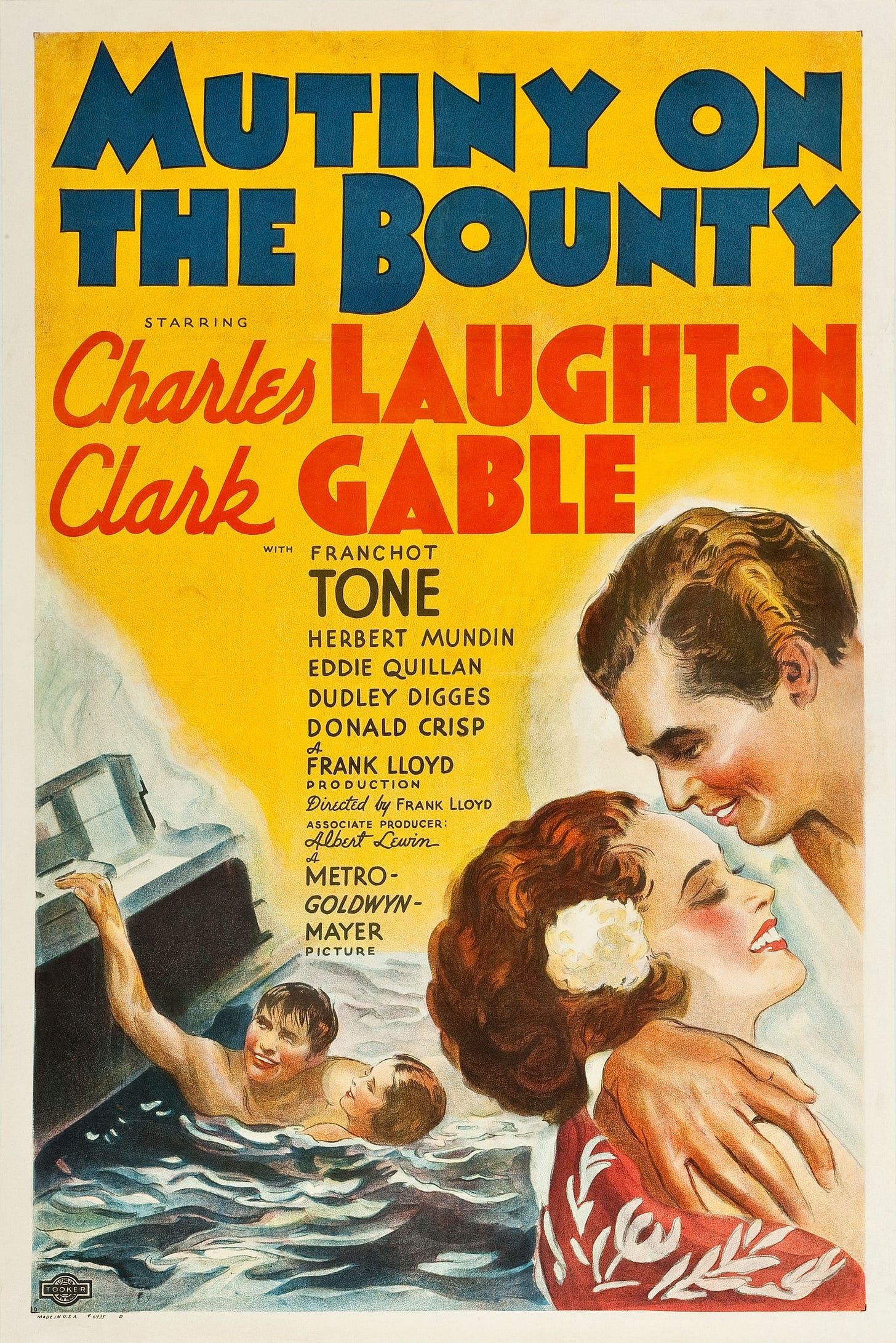
Can’t believe they just dumped the starchy hope of the crown into the ocean 👀
This is the kind of micro history I completely eat up. Looking forward to more of these!
all i can imagine is how the people that didn't mutiny felt once they were chewing on that hardtack, knowing they could have been partying in tahiti